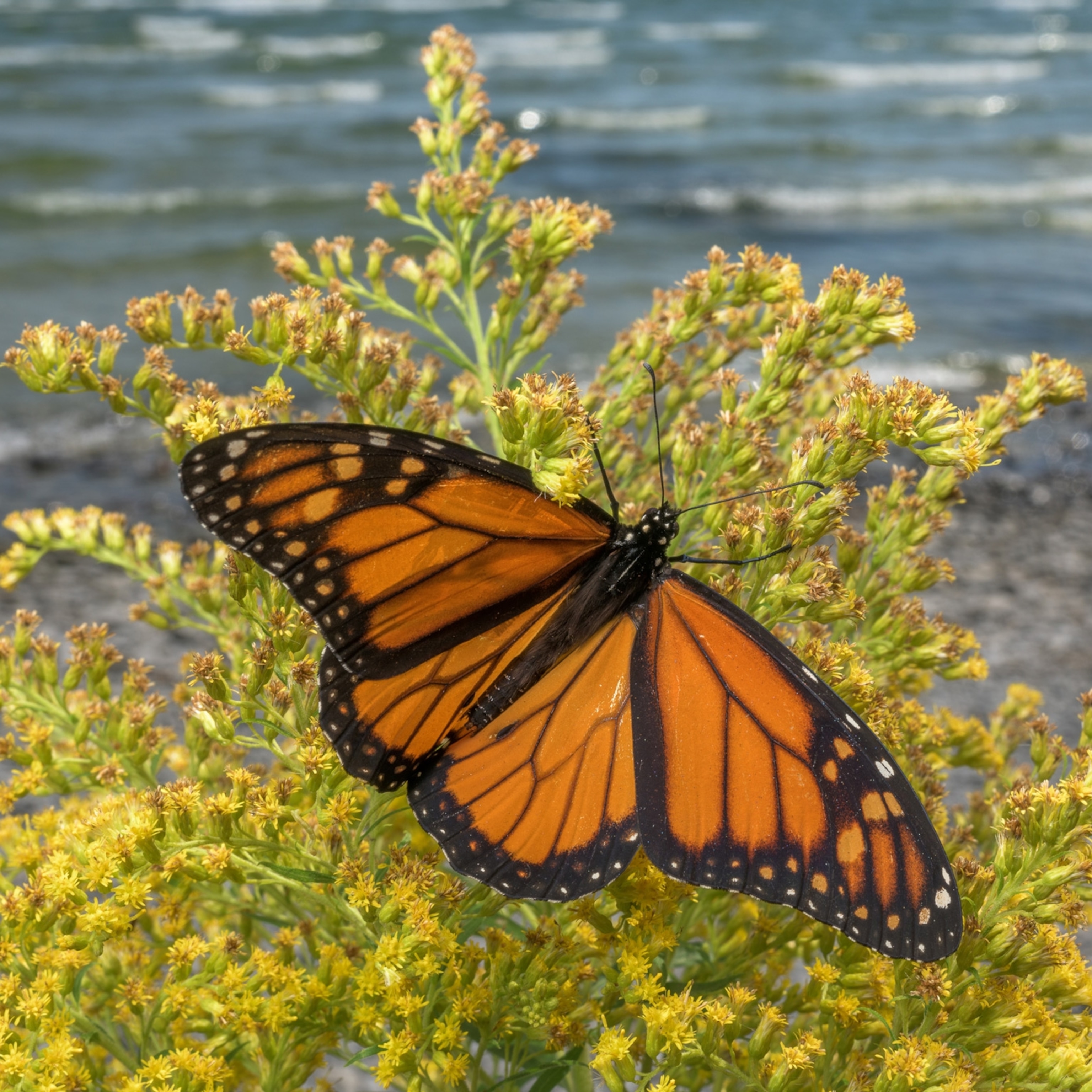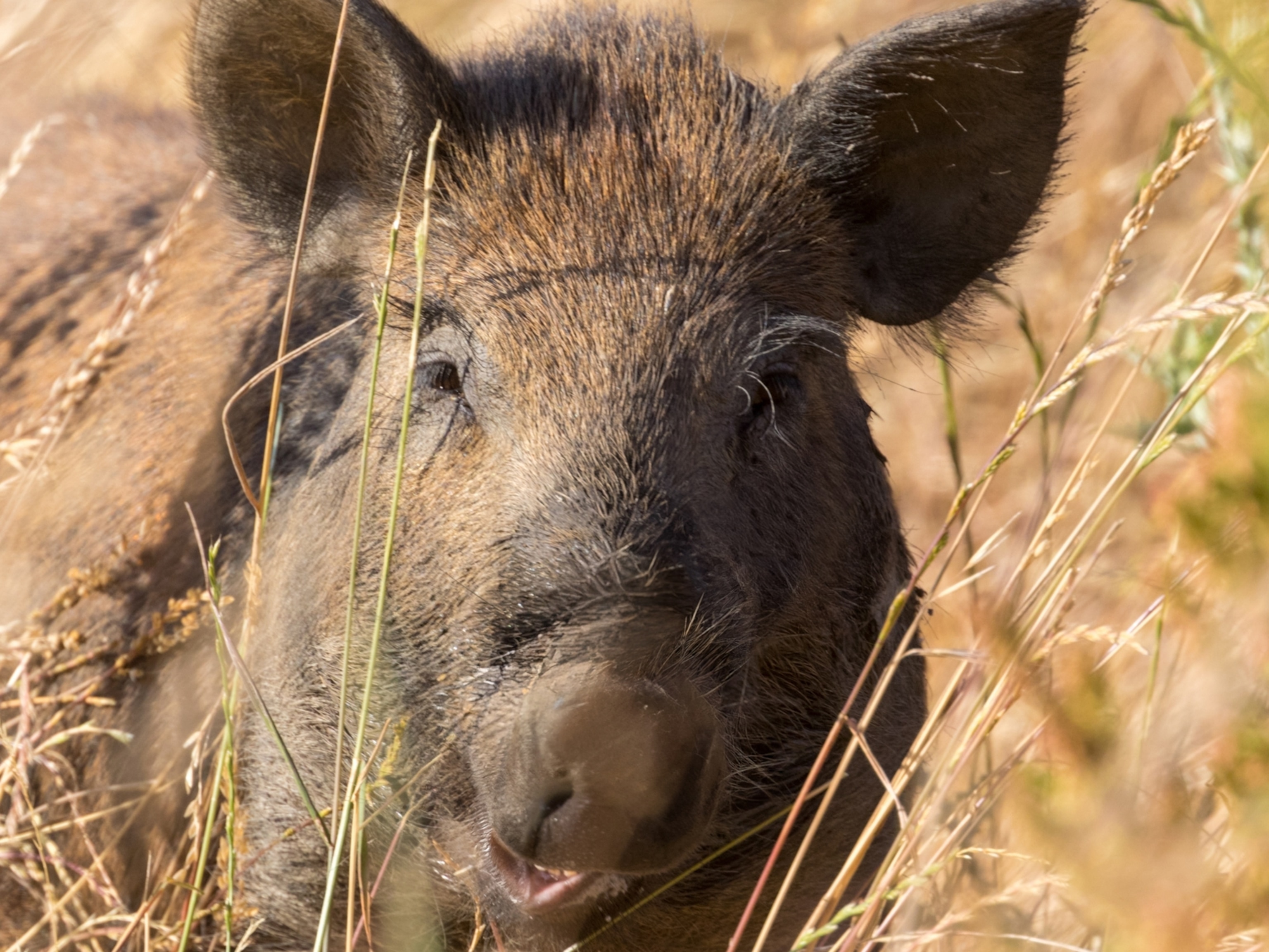The epic 3,000-mile monarch butterfly migration may become a thing of the past. Each fall, monarchs travel from their summer homes in the northern U.S. and Canada to winter habitats in California and Mexico. But the 2018 Western Monarch Thanksgiving Count found that the number of west-coast monarchs spending the winter in California had plunged to only 20,456 butterflies—a drop of 86 percent since last year. And the number of eastern monarchs overwintering in Mexico this year has dropped 15 percent since last year, for a total decline of more than 80 percent over the past 20 years, according to the National Wildlife Federation.
This year’s count is only the latest in a string of bad news for the charismatic butterfly that makes one of the longest known insect migrations. The culprit? Humans. The twin forces of human-caused climate change and habitat loss are now threatening North American monarch butterflies with extinction.
Increasing carbon dioxide levels may be making milkweed—the only food monarch caterpillars will eat—too toxic for the monarchs to tolerate. And higher temperatures may also be driving summer breeding areas further north. That means the monarchs’ migration routes will get longer and therefore more difficult. (Learn how monarch butterflies make their epic migration.)
“A lot of environmental threats can pile up on top of each other,” says University of Wisconsin entomologist and director of the UW-Arboretum Karen Oberhauser. And the consequences can be hard to predict.
Although monarchs teeter on the edge of an extinction tipping point—in which their numbers drop too low for the species to recover—scientists like Obserhauser say all is not yet lost. Creating new monarch habitat by planting native milkweed species may provide crucial fuel and rest stops for the traveling butterflies, as will taking more action to address climate change.
WHERE’S THE MILKWEED?
A 2004 email from a Midwestern farmer first alerted Kansas University entomologist Chip Taylor to the pending monarch apocalypse. The creation of herbicide-resistant corn and soybeans meant that farmers could eradicate weeds and other understory plants, including milkweed, that competed with their crops.
The invisible hand of fear and dread gripped Taylor’s gut. He had spent years studying monarchs and knew they depended on the milkweed studding their migratory corridor across the Midwest. The advent of these new crop varieties meant the death of milkweed.
Data over the next few years only confirmed Taylor’s worst fears: monarch numbers began to plummet. “In a very short period of time, monarchs took a tremendous hit, with tremendous consequences,” Taylor says.
In addition to the loss of milkweed across farms, drought also harms milkweed quality. A 2013 drought in Texas decimated milkweed there, which contributed to low monarch numbers that year.

The loss of milkweed has clued in an increasingly concerned public that the beautiful butterflies they love might go the way of the passenger pigeon and the woolly mammoth. Awareness of vanishing milkweed bled over into fears of how monarchs would fare as the climate continued to change. A series of papers in the last few years shows that these worries were not misplaced.
Rising carbon dioxide levels from the burning of fossil fuels sit at the heart of climate change, and this increase of carbon can alter how plants like milkweed build certain molecules, explains ecologist Leslie Decker, a postdoctoral researcher at Stanford University. Milkweed produces toxic steroids called cardenolides. The monarchs have evolved in a way that allows them to tolerate low levels of this poison, storing it in their bodies as a bitter-tasting deterrent to predators.
Models predict an 11 to 57 percent chance that monarch numbers would drop so much in the next 20 years that the species wouldn’t be able to recover.
Cardenolides also help the butterflies by impeding the growth of a monarch parasite with the tongue-twisting name Ophryocystis elektroscirrha. “I had to practice pronouncing this when I was in grad school,” Decker laughs.
The single-celled parasite can infect newly hatched caterpillars by drilling holes in their gut to replicate. If the caterpillars survive, the resulting butterflies have misshapen wings and lowered endurance. Cardenolides help the monarchs tolerate the parasite so that it doesn’t harm them.
But when Decker grew milkweed in a greenhouse with carbon dioxide levels of 760 parts per million (ppm)—what climate scientists project will happen in 150 to 200 years as the current level of 410 ppm continues to rise—she found that the plants produced a different mix of cardenolides, one that was less effective against monarch parasites. She published her findings in July 2018 in Ecology Letters.
“We don’t know how we’re changing the green pharmacy around us,” Decker says.
GOLDILOCKS ZONE OF TOXICITY
Furthermore, not all milkweed created equal. As the public began to plant milkweed in their backyard, big box and chain nurseries eagerly supplied them. The plants they tended to offer, however, were a hardy, easy-to-grow species of milkweed originally found in Mexico, Asclepias curassavica. Like its other North American cousins, A. curassavica produces toxic cardenolides, but in significantly higher levels than native U.S. milkweed species. These levels are at the very top end of what the monarchs can handle, says Matt Faldyn, an ecology Ph.D. student at Louisiana State University.
In work published in Ecology, Faldyn found that warming temperatures increased cardenolide levels in A. curassavica even further, making them too toxic for the butterflies.
“There’s a Goldilocks zone for these toxins, where they’re not too toxic but not too weak, either. With climate change, milkweed may pass this tipping point and leave the Goldilocks zone,” Faldyn says.
Oberhauser says that because both studies on milkweed toxicity were done in the lab, scientists still don’t know for sure exactly what impact changing cardenolide levels will have on monarchs. Still, Faldyn suggests looking for native milkweed species to plant, as they are best adapted to local environments and may be less likely to turn ultra-toxic.
BIGGER WINGS
Climate change isn’t affecting monarchs just via milkweed. It’s also shaping the butterflies more directly. Micah Freedman, a Ph.D. student in ecology and evolution at the University of California, Davis, visited museum collections around the country in 2017. With the help of a National Geographic Society exploration grant, Freedman was able to measure the size of thousands of monarchs dating back to the 1870s. Monarch butterflies come in a range of sizes, with a wingspan from 3.5 to 4.8 inches, so it was only when he began to analyze his measurements on the computer that he found a small but consistent 4.9 percent increase in wing size over the past century and a half.
“I initially didn’t believe it myself,” he says.
Freedman’s study, published this month in Animal Migration, couldn’t determine why wing size is on the rise, but he believes that one reason could be climate change. Rising temperatures could be pushing spring and summer breeding grounds further north, which means a longer return trip to Mexico in the fall. Knowing that monarch size corresponds to the distance they migrate, Freedman says, monarchs with larger, longer wings have a major advantage over their smaller counterparts.

As population numbers continue to drop, extinction becomes ever more likely. The United States Geological Survey asked Oberhauser, Brice Semmens, a fisheries biologist at the Scripps Oceanographic Institute who studies population dynamics, and a group of other monarch experts to determine the largest threats to monarchs and the chances that this species would decline to the point of no return. Their mathematical models predicted an 11 to 57 percent chance that monarch numbers would drop so much in the next 20 years that the species wouldn’t be able to recover. To cut this risk in half would mean monarch populations must increase by more than five million butterflies, Semmens says.
“No population process is inexorable. We can’t predict what will happen next year,” he says.
A follow-up study by the USGS group showed that the top three factors that led to lower monarch numbers were loss of habitat area in the Upper Midwest and high temperatures both in the spring and the late summer. Taylor estimates that more than a billion milkweed stems are needed to reduce the carnage.
“We have the capability to save monarch and other species,” he says. “The question is whether we have the will to do it.”
HOW YOU CAN HELP
- Plant milkweed that’s native to your area for monarchs to lay eggs on and for monarch caterpillars to eat. Even just a pot or two helps, according to the Monarch Joint Venture, a group of nonprofits, government agencies, businesses, and academic institutions.
- Provide native nectar-rich plants for monarch butterflies to feed on.
- Become a citizen scientist. There are lots of opportunities to participate in tracking monarch migration, milkweed growth, caterpillars, and other important aspects of monarch survival. Coming up soon is the Western Monarch New Year’s Count.
- Understand why our climate is getting warmer and what the solutions are.
- Encourage others to learn and get involved.









